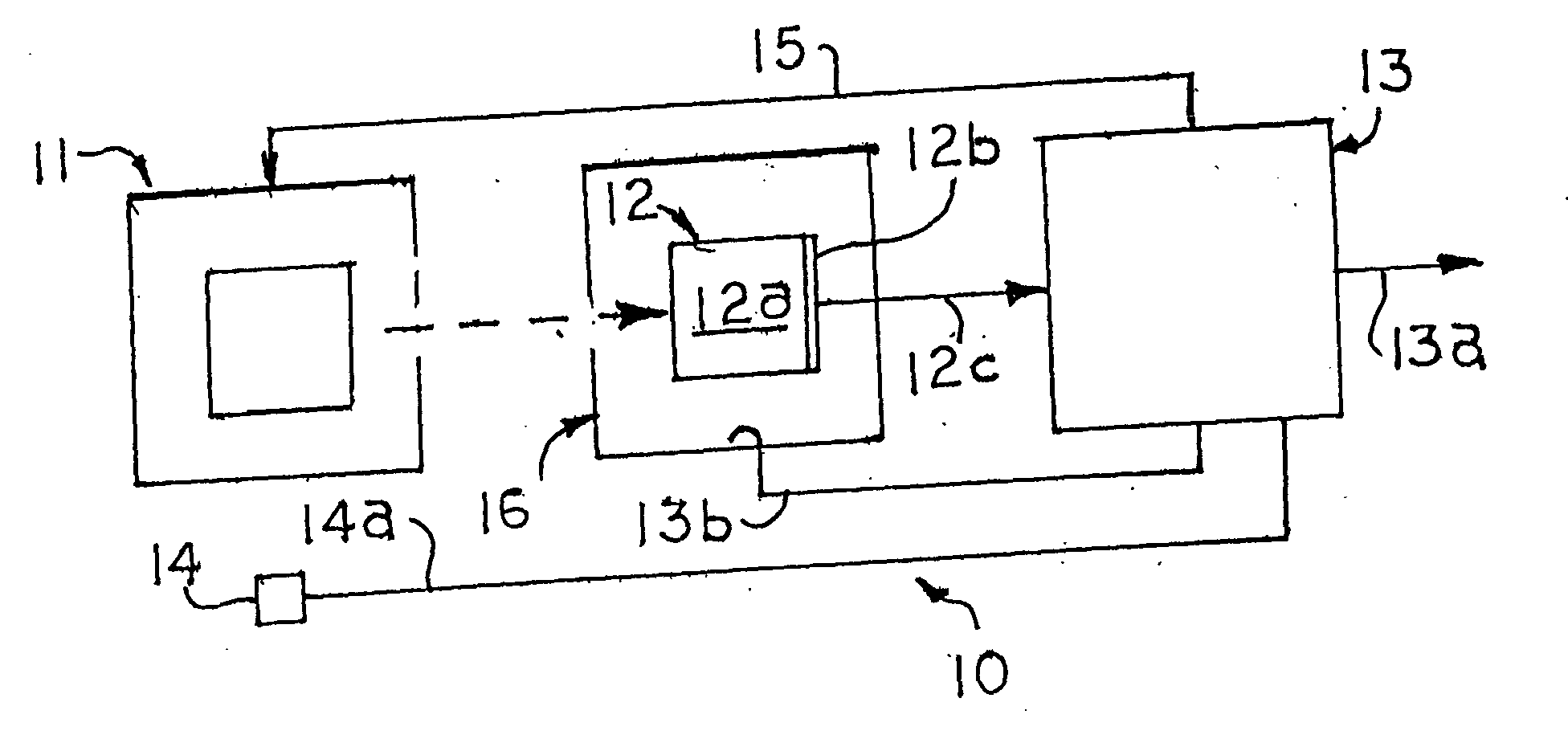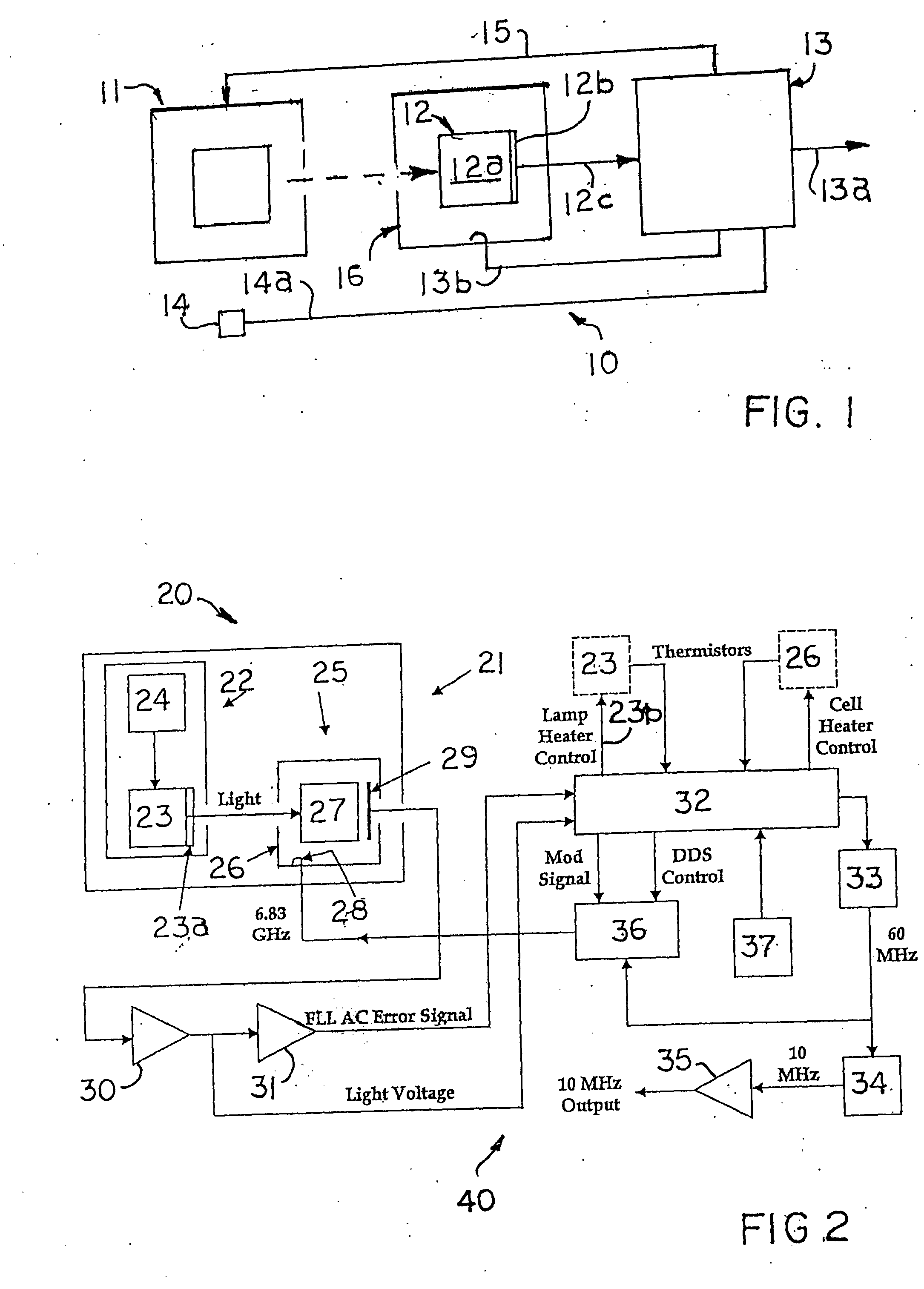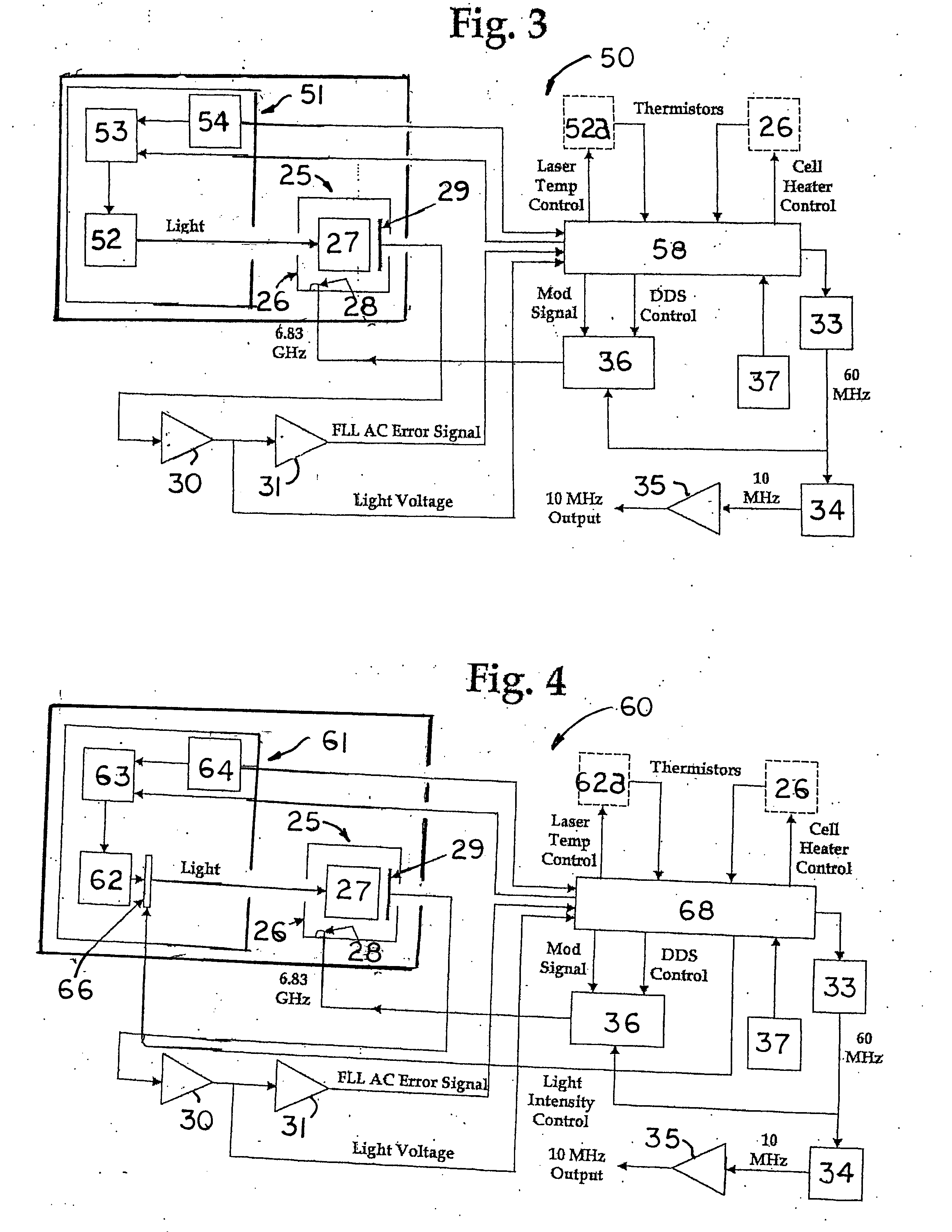Light stabilization for an optically excitable atomic medium
a technology of optical excitability and atomic media, applied in the field of optical excitability excitable atomic media, can solve the problems of complex achievement of this result, no of the older methods presently satisfactory, and more difficult control of the temperature of the light source and the gas cell
- Summary
- Abstract
- Description
- Claims
- Application Information
AI Technical Summary
Benefits of technology
Problems solved by technology
Method used
Image
Examples
Embodiment Construction
The following more detailed description of the invention relates to currently preferred atomic frequency standard embodiments and modes of invention. The embodiment elements and features that are described below are intended to exemplify but not limit the invention.
FIG. 1 is a very simplified block diagram to assist in the explanation of the invention. As illustrated by FIG. 1, one embodiment 10 of the invention can comprise a means 11 for providing a controlled emission of D transition light for activating an atomic gas, such as Rb or Cs; a microwave cavity 16, which is excited by microwave energy, and which includes a resonance cell 12 for the atomic gas 12a to be activated by the light from means 11, and a photosensor 12b; and an electronic assembly 13 for generating a standard frequency 13a that is controlled to remain constant, and the microwave energy 13b for exciting the microwave cavity 16. As explained in greater detail below, in the invention, the light from the means 11...
PUM
 Login to View More
Login to View More Abstract
Description
Claims
Application Information
 Login to View More
Login to View More - R&D
- Intellectual Property
- Life Sciences
- Materials
- Tech Scout
- Unparalleled Data Quality
- Higher Quality Content
- 60% Fewer Hallucinations
Browse by: Latest US Patents, China's latest patents, Technical Efficacy Thesaurus, Application Domain, Technology Topic, Popular Technical Reports.
© 2025 PatSnap. All rights reserved.Legal|Privacy policy|Modern Slavery Act Transparency Statement|Sitemap|About US| Contact US: help@patsnap.com



